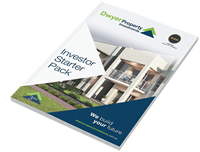 How would you define ‘a comfortable retirement’? When you finally retire do you want to go on overseas holidays? Do you want to run a decent car and/or eat out occasionally? Or even afford a regular hair cut?
How would you define ‘a comfortable retirement’? When you finally retire do you want to go on overseas holidays? Do you want to run a decent car and/or eat out occasionally? Or even afford a regular hair cut?
There are endless ‘retirement calculators’ that predict how much you need in order to fund the sort of post-retirement lifestyle you aspire to. The trouble is:
Let’s start with the first point – everyone has different interpretations of 'comfortable retirement.'
Australians have been led to believe that $1 million is enough for a comfortable retirement. But one leading superannuation industry veteran is questioning this. He says that, in the current low interest climate, if your $1 million was used to buy a lifetime annuity it would return you a fortnightly income that just about equated to the government pension – no more! Forget overseas travel and new cars, a retired couple would get just under $34,000 income per annum.
Depending on your definition of ‘comfortable retirement’ it might be a rather austere one. And, of course, how long your nest egg lasts depend on how long you plan to stick around.
Which brings us to the second point… no one can predict when you will die;
The government’s recent intergenerational report found that by 2055, Australians’ life expectancy would have climbed to 95.1 years for men and 96.6 for women. 2055 is a few years away but it is worth taking note of your own family’s history of longevity. If they regularly lived to a ripe old age, make sure you have put enough away to last you another 30 or even 40 years. Begin by calculating your basic annual living expenses – for example:

You need a crystal ball to predict how energy bills might fluctuate over the next decade or two but use the current cost as your baseline.
Now to the last point….. no one can guarantee what will happen with investments and interest rates in years to come.
Australians tend towards lump sums rather than an annuity income when they retire. Current low interest rates could severely affect the returns for those investors. Whilst past modelling by the ASFA (The Association of Superannuation Funds of Australia) and many other organisations showed couples could retire comfortably if they had $500,000 in their accounts, most of these models date back to the 1990’s and early 2000’s. They assume the superannuants own their own homes and they certainly do not take into account what happens to superfund nest-eggs in a very low interest rate environment.
Also the models assume people spend in a linear pattern i.e roughly the same amount each year. Life isn’t like that! Most retirees will spend more money when they first retire either because they don’t know how much they should be spending or because they are enjoying the freedom of retirement and the chance to travel. The outgoings tend to taper off in the middle years of retirement but individuals or couples who overspend in the early years can hit the wall later on! Particularly as medical expenses tend to climb in line with ageing.

So what is the answer?
Take a hard look at your investments and retirement plan. Are you investing wisely in areas that will give you a better long term return, like property, or are you stuck in low-interest areas? We are in the ninth year of ‘low interest’ and there isn’t much sign of that changing short term. In the US the predicted number of retirees who risk running out of funds in their lifetime has risen from 6% to a massive 57% simply because their savings are growing so slowly in the current market.
If you want a ‘comfortable retirement’ it may be time to make a few changes.


Jason is the Managing Director of Dwyer Property Investments and a trusted local expert. Together with build partner Dwyer Quality Homes, he’s been helping Queenslanders buy profitable, cash-positive, tax-effective investment property for 35 years. Visit dwyerpropertyinvestments.com.au.

Privacy Policy | © 2020 Dwyer Property Investments. All Rights Reserved.